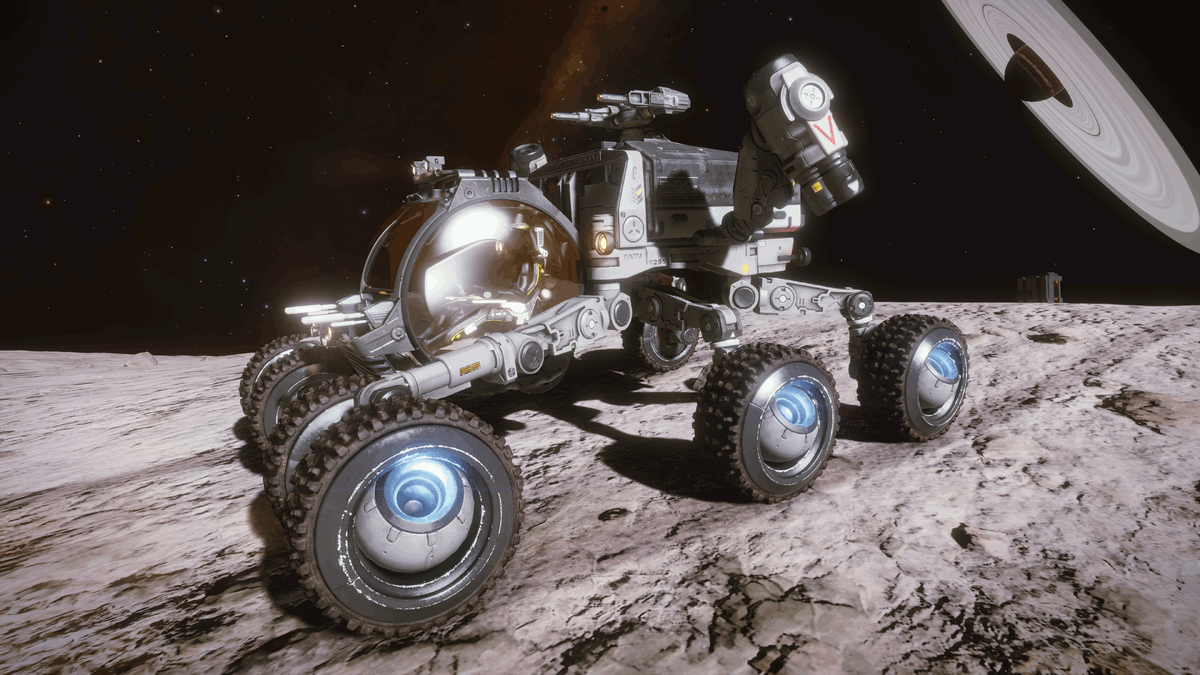For ages I've been frustrated by the SRV slipping out and ending up backwards, but I've never really given it much thought until today.
Finally, I fiddled around with it, and have a plausible explanation for why it acts so funny.
In order to make the SRV work on low-g planets, they needed to invert the way real tires work. IRL, tires give you thrust forwards, yes, but also thrust UP, as I've tried to show in this basic diagram:
View attachment 291547
Now, the trouble with this is, if you have significant thrust, it would tend to throw the vehicle into the air repeatedly as you accelerate, with the thrust overcoming the tenuous pull of gravity. The only solution is to instead change the wheel to function more like THIS:
View attachment 291548
This has benefits; the SRV will cling to surfaces like crazy, even things far steeper than you'd expect, and the 'going airborne' problem is solved.
But there's a problem with this, and that problem is turning. In a normal car, as you turn, your front wheels pull themselves up on top of the approaching ground, while the back tires tend to skid through it, pulling the rear wheels down and stabilizing the vehicle.
But if your front wheels are instead pulling themselves DOWN into the ground, then acceleration won't stabilize the vehicle, but instead DE-stabilize it! Every bit of additional force pulls the wheels further into the ground, essentially acting like a giant brake. This causes the vehicle to lean forwards, into the turn, and the more it leans, the more those wheels bind with the ground, and the faster the vehicle turns!
This inevitably results in the SRV constantly and unavoidably spinning 180 degrees, until forward thrust stops digging its own face literally into the dirt.
This also explains why the hand brake doesn't cause this instability; it STOPS all thrust to the wheels, so rather than digging in and spinning crazily and out of control, it simply skids gracefully to a halt.
Now, I'm no physics expert, so I have no idea how to actually fix this. But doesn't this seem like a plausible reason why SRVs are so unstable?
If this IS the case, then perhaps there could be a way to prevent this from happening so much? Maybe a toggle to allow us to stop the SRV from pushing us into the ground? I'd happily learn to deal with an SRV that tends to launch itself into the air, if it means less going out of control and spinning around!

 elite-dangerous.fandom.com
elite-dangerous.fandom.com

